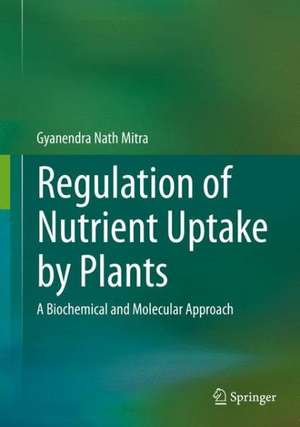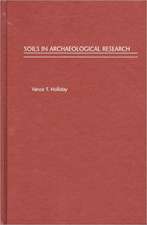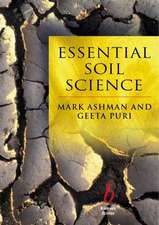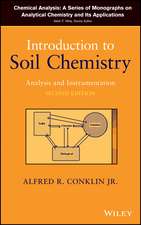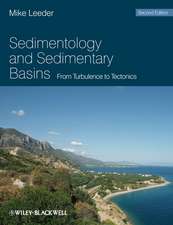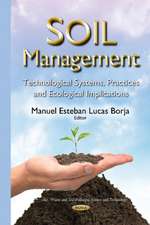Regulation of Nutrient Uptake by Plants: A Biochemical and Molecular Approach
Autor Gyanendra Nath Mitraen Limba Engleză Hardback – 18 mai 2015
Recent research indicates that nutrient uptake, its transport and redistribution in plants are under genetic control. There are groups of genes for each nutrient that encode transporter proteins whose functions are to acquire the specific nutrient from the soil and transport it across the plasma membrane of the root hair cells for use in plant metabolism. Deficiency or sufficiency of a plant nutrient induces different groups of genes to produce m-RNA transcripts for translation of transporter proteins. A large number of metabolic enzymes are up or down regulated in response to deficiency of plant nutrients. Morphological and metabolic adaptations in order to better acquire nutrients and use them frugally when nutrients are scarce in the growth medium can be observed in plants. Heavy metals, which are toxic to plants, induce different sets of defence mechanisms.
In 20 chapters, the book describes plants’ uptake mechanisms for all the major, secondary and micronutrients, beneficial elements and heavy metals. References to research work quoted in the text are updated up to 2014 and included at the end of each chapter. Biotechnological approaches to improving nutrient use efficiency are discussed wherever such information is available. The structure and functions of transporter proteins involved in the uptake of nutrients are discussed. Additional information on some of the specific topics is provided in text boxes or as separate sections within the chapters. Lastly, the terminology used has been explainedas far as possible in the text, mostly within parentheses.
| Toate formatele și edițiile | Preț | Express |
|---|---|---|
| Paperback (1) | 556.59 lei 38-44 zile | |
| Springer India – 23 oct 2016 | 556.59 lei 38-44 zile | |
| Hardback (1) | 627.69 lei 3-5 săpt. | +25.72 lei 6-10 zile |
| Springer India – 18 mai 2015 | 627.69 lei 3-5 săpt. | +25.72 lei 6-10 zile |
Preț: 627.69 lei
Preț vechi: 689.77 lei
-9% Nou
Puncte Express: 942
Preț estimativ în valută:
120.12€ • 130.44$ • 100.90£
120.12€ • 130.44$ • 100.90£
Carte disponibilă
Livrare economică 02-16 aprilie
Livrare express 18-22 martie pentru 35.71 lei
Preluare comenzi: 021 569.72.76
Specificații
ISBN-13: 9788132223337
ISBN-10: 8132223330
Pagini: 220
Ilustrații: XXIII, 195 p. 18 illus., 5 illus. in color.
Dimensiuni: 178 x 254 x 15 mm
Greutate: 0.6 kg
Ediția:2015
Editura: Springer India
Colecția Springer
Locul publicării:New Delhi, India
ISBN-10: 8132223330
Pagini: 220
Ilustrații: XXIII, 195 p. 18 illus., 5 illus. in color.
Dimensiuni: 178 x 254 x 15 mm
Greutate: 0.6 kg
Ediția:2015
Editura: Springer India
Colecția Springer
Locul publicării:New Delhi, India
Public țintă
ResearchCuprins
1. Introduction and Uptake of Water and Nutrient Ions.- 2. Nitrogen (N) uptake.- 3. Phosphate (Pi) Uptake.- 4. Potassium (K) uptake.- 5. Calcium (Ca) uptake.- 6. Magnesium (Mg) Uptake.- 7. Sulphur (S) Uptake.- 8. Definition of Heavy metals, Essential and Beneficial Plant Nutrients.- 9. Uptake of Heavy Metals.- 10. Iron (Fe) uptake.- 11. Zinc (Zn) uptake.- 12. Manganese (Mn) uptake.- 13. Copper (Cu) uptake.- 14. Boron (B) Uptake.- 15. Molybdenum (Mo) uptake.- 16. Nickel (Ni) uptake.- 17. Chloride (Cl-) uptake.- 18. Sodium (Na) uptake.- 19. Silicon (Si) Uptake.- 20. Cobalt (Co), selenium (Se), Vanadium (V), Cadmium (Cd), Lead (Pb) and Titanium (Ti)
Recenzii
“I found this book to be useful in getting information about members of major transporter families not only for model plants such as Arabidopsis thaliana but also for other plant species. I also found it useful that the volume provides information about the concentration of different minerals in the soil and in plant tissues including grains … as well as provides tables with information about the sensitivity of various crops to mineral deficiencies.” (Olena Vatamaniuk, The Quarterly Review of Biology, Vol. 92 (3), September, 2017)
Notă biografică
Dr. Gyanendra Nath Mitra, Honorary Professor in The Orissa University of Agriculture and Technology, Bhubaneswar, India was formerly Dean, Faculty of Agriculture and Professor and Head, Department of Agricultural Chemistry, Soil Science and Biochemistry. His academic qualifications include M.Sc (Chemistry), Associate I.A.R.I (Soil science & Agricultural Chemistry) and Ph. D (Biochemistry). Dr. Mitra has offered courses and carried out research in diverse fields with about 100 peer reviewed publications to his credit. Post superannuation he has authored three books. The book ‘Regulation of Nutrient Uptake by Plants-A Biochemical and Molecular approach’ is a result of his intense effort in a span of 10 years to study thousands of research publications on the subject as they get published and use them to write different sections of 20 chapters of the Book. He has delivered a number of lectures at the Faculty level and in various seminars and symposia and published articles in journalsto attract attention of the research workers and students to get informed on the topic. The author hopes that wide circulation of the book would spur more research on the subject and help in developing crop varieties with superior nutrient use efficiency and beneficial quality parameters.
Textul de pe ultima copertă
This book describes the mechanisms of nutrient taken up by plants at the biochemical and molecular level. This is a new concept developed over the past 30 years, primarily due to use of modern technology developed in biotechnological research, instrumentation, modern computation facilities, bioinformatics, the large volumes of information generated by use of various ‘omics’ and of course the dedicated hard work of a large number of researchers.
Recent research indicates that nutrient uptake, its transport and redistribution in plants are under genetic control. There are groups of genes for each nutrient that encode transporter proteins whose functions are to acquire the specific nutrient from the soil and transport it across the plasma membrane of the root hair cells for use in plant metabolism. Deficiency or sufficiency of a plant nutrient induces different groups of genes to produce m-RNA transcripts for translation of transporter proteins. A large number of metabolic enzymes are up or down regulated in response to deficiency of plant nutrients. Morphological and metabolic adaptations in order to better acquire nutrients and use them frugally when nutrients are scarce in the growth medium can be observed in plants. Heavy metals, which are toxic to plants, induce different sets of defence mechanisms.
In 20 chapters, the book describes plants’ uptake mechanisms for all the major, secondary and micronutrients, beneficial elements and heavy metals. References to research work quoted in the text are updated up to 2014 and included at the end of each chapter. Biotechnological approaches to improving nutrient use efficiency are discussed wherever such information is available. The structure and functions of transporter proteins involved in the uptake of nutrients are discussed. Additional information on some of the specific topics is provided in text boxes or as separate sections within the chapters. Lastly, the terminology used has been explainedas far as possible in the text, mostly within parentheses.
Recent research indicates that nutrient uptake, its transport and redistribution in plants are under genetic control. There are groups of genes for each nutrient that encode transporter proteins whose functions are to acquire the specific nutrient from the soil and transport it across the plasma membrane of the root hair cells for use in plant metabolism. Deficiency or sufficiency of a plant nutrient induces different groups of genes to produce m-RNA transcripts for translation of transporter proteins. A large number of metabolic enzymes are up or down regulated in response to deficiency of plant nutrients. Morphological and metabolic adaptations in order to better acquire nutrients and use them frugally when nutrients are scarce in the growth medium can be observed in plants. Heavy metals, which are toxic to plants, induce different sets of defence mechanisms.
In 20 chapters, the book describes plants’ uptake mechanisms for all the major, secondary and micronutrients, beneficial elements and heavy metals. References to research work quoted in the text are updated up to 2014 and included at the end of each chapter. Biotechnological approaches to improving nutrient use efficiency are discussed wherever such information is available. The structure and functions of transporter proteins involved in the uptake of nutrients are discussed. Additional information on some of the specific topics is provided in text boxes or as separate sections within the chapters. Lastly, the terminology used has been explainedas far as possible in the text, mostly within parentheses.
Caracteristici
Presents an excellent overview and summary of new concepts of plant nutrient acquisition mechanisms Describes mechanisms of uptake of all the plant nutrients in a single book Provides an invaluable resource for researchers in plant and environmental sciences and in agronomy and other branches of agriculture
